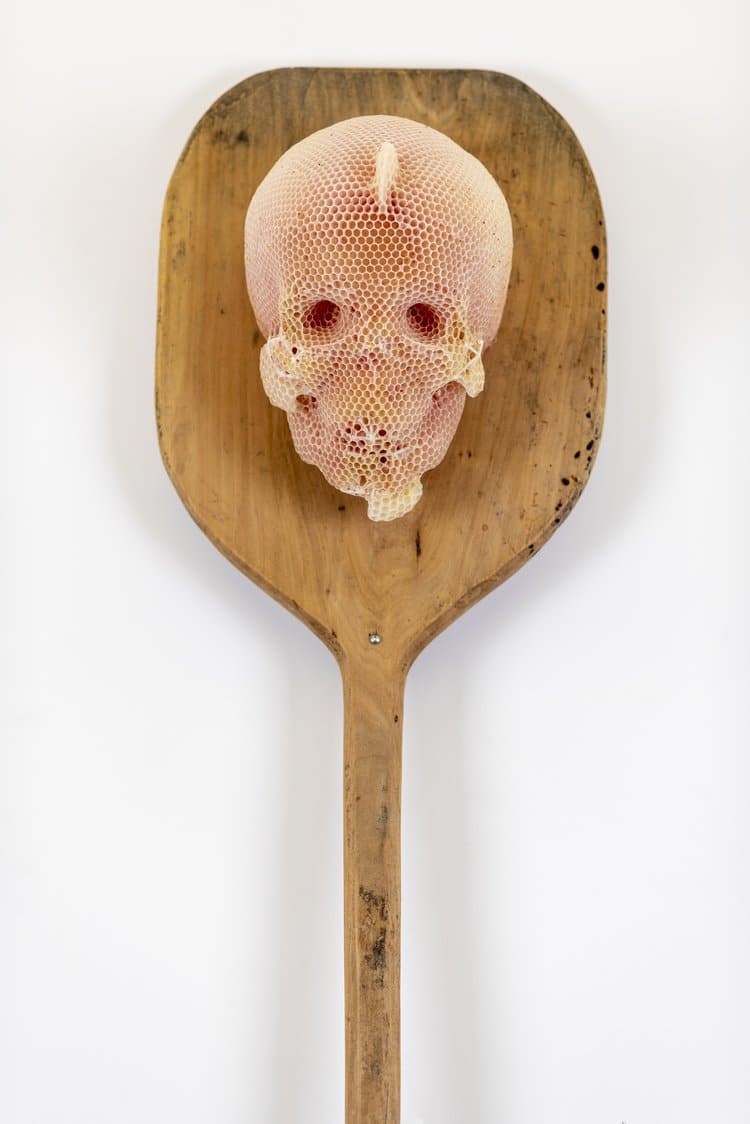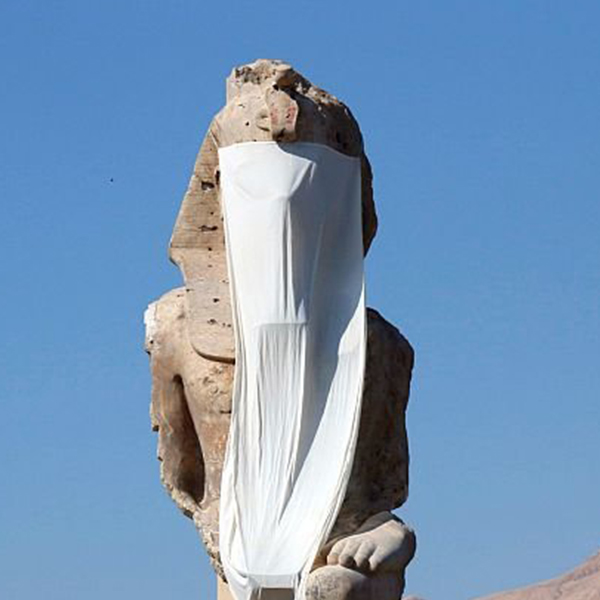
For nearly 20 years, Slovakian artist Tomáš Libertíny has been working with bees to produce collaborative sculptures. Libertíny, who views himself as the conductor of this orchestra of bees, uses his art to explore the beauty and intelligence of nature. His series Memento Vivere / Feed Your Head is a set of three sculptures created to play on the classic concept of memento mori.
The series was inspired by the New Testament story of Salome requesting the head of St. John the Baptist on a platter. This story, frequently depicted in classical art by painters like Caravaggio, is evident in Libertíny's use of metal and wood serving plates and pallets. Except here, in a reversal of memento mori, the skull isn't a symbol of what once was. Instead, the beeswax skulls demonstrate what can be reborn through the efforts of nature.
“The whole tray appears more as a trophy as well as an icon. The honeycomb head is growing out of the dish as if wanting to become alive again,” the Rotterdam-based artist tells My Modern Met. “If the head was left longer inside the beehive, it would have become completely human as the bees would continue adding more substance to the face. The trajectory is reversed. The skull becomes covered in flesh with the help of nature. It is ‘the good news' and symbolic resurrection and hope.”
To guide the slow, painstaking process, Libertíny creates a skull-shaped framework, which is inserted into the beehive. From there, the bees take over to cover the frame and produce the skull. Acting as an artistic directory of sorts, Libertíny closely supervises the work and makes adjustments as needed.
In some cases, that means the addition of red pigment. Red was specifically selected because bees are unable to see the color red. For Libertíny, this only adds to the mystique and brings a new spiritual dimension to the work.
It took three separate honeybee colonies the entire spring to produce the series. For Libertíny, the satisfaction comes in revealing the resilience of nature. “Natural beeswax is vulnerable yet one of the most durable natural materials. It can last thousands of years. Sometimes, people who look weak on the outside are the most resilient souls walking among us.”
Memento Vivere / Feed Your Head is a collaborative set of sculptures created by artist Tomáš Libertíny and three bee colonies.


The work was inspired by the New Testament story of St. John the Baptist's head being served on a platter.



Rather than symbolizing an end of life, these beeswax skulls are a reversal of death, built up from nothing.



“Natural beeswax is vulnerable yet one of the most durable natural materials. It can last thousands of years.”

Tomáš Libertíny: Website | Facebook | Instagram
My Modern Met granted permission to feature photos by Tomáš Libertíny.
Related Articles:
Thousands of Bees Work With Artist on Incredible Embroidery Art
Artist Partners with 60,000 Bees to Form Splendid Teapot Sculpture
Artist Ava Roth on Creative Curiosity and Her Collaboration With Honeybees [Podcast]
Artist Collaborates With 60,000 Bees to Recreate Nefertiti’s Bust Out of Beeswax and Honeycomb























































































